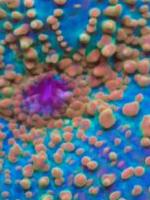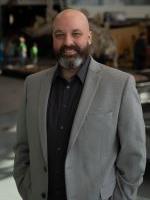Expansive Avenues: Welcoming Students and Families Through Joyful, Authentic Introductions to CT
,
Colorado Convention Center, Bluebird Ballroom Lobby, Table 29
Presenters




Session description
Purpose & objective
Informal education organizations can play a critical role in bringing together discrete communities of practice into a larger cross-organizational community of educators with common goals. Over the last five years, the Science Museum of Minnesota, the Cargill Foundation, and two Minnesota public school districts have been partners in building our community’s capacity for STEM education, teaching STEM in highly relevant and engaging ways, and combating bias and inequality. Together we are exploring different avenues that all converge on integrating Computational Thinking into students’ and families’ experiences. These avenues included identifying, recruiting, training, and working closely with teacher leaders; co-developing curricula that integrate CT into core content areas; and providing welcoming environments for teachers and students to investigate CT by developing residency models, with Science Museum instructors joining teachers in their classrooms for a week of exploration.
More recently, these avenues include applying a community-oriented lens to develop family and community engagement events, as well as foregrounding shared, joyful, authentic learning experiences in the form of an assembly geared toward helping students define their identities as computational thinkers. In this presentation, Science Museum of Minnesota educators will share their experiences in designing both an assembly and a family event that introduce CT to 3-5 graders and their families. Participants will have the opportunity to engage in select activities from the assembly as well as from the family and community engagement event. Through our presentation, we will convey the positive impact that comes with building layers of community support for computer science education and computational thinking integration.
Outline
(10 minutes)
How did this work come to be?
During the first ten minutes of the presentation, we will share how the Science Museum of Minnesota came to work with the Cargill Foundation and our two partner school districts. This history will include previous collaborative efforts, as well as what we learned about building a sense of community to empower teachers, the outcomes of our Residency model which impacted 1338 students taught by 52 teachers in 13 schools in the 2022-2023 school year alone, and the CT integration curricula that came out of these years of collaborative work.
(40 minutes)
Designing an Assembly; Designing a Family Event
The next forty minutes will be focused on the process and outcomes of our assembly and family event development, with twenty minutes for either topic. The Science Museum of Minnesota is unique in that we develop in-house assembly programs focused on a specific scientific topic or field (for example dinosaurs, water, or engineering) and have instructors perform those assemblies at schools, community events, local festivals, and more. We will share the models that we use to guide our assembly and family event development, and will also select an activity from each event for our audience to actively participate in.
(10 minutes)
Where does it go from here?
The final ten minutes will be focused on the implications and next stages of our work. The State of Minnesota has recently passed legislation requiring all public and charter schools to offer computer science within the next five years; we will explore how our continued CT work at the Science Museum can impact the work that is happening at the local, state, and federal level. More importantly, we will emphasize that there are strong roles that informal education spaces (such as museums, libraries, and community organizations) can fill in building, supporting, and expanding opportunities in computer science and computational thinking for students, teachers, families, and communities. We plan to leave some time for audience questions as well.
Supporting research
Computational Thinking and Computer Science Education
- Dweck, C. (2000). Self Theories: Their Role in Motivation, Personality, and Development. New York, NY: Psychology Press.
- Grover, S (2018). The 5th ‘C’ of 21st Century Skills? Try Computational Thinking (Not Coding). Retrieved from http://www.edsurge.com/news/2018-02-25-the-5th-c-of-21st-century-skills-try-computational-thinking-not-coding
- Margolis, J., et al. (2008). Stuck in the Shallow End: Education, Race, and Computing. Cambridge, MA: MIT Press.
- Moeller, B., and Sherwood, H. The CT Integration Framework. New York, NY: Center for Children and Technology, Education Development Center. Retrieved from https://drive.google.com/drive/folders/12Si1kHwlqXELoBgD2Zrm2olTkqiRhgpy
- National Research Council (2012). Equity and Diversity in Science and Engineering Education. A Framework for K-12 Science Education: Practices, Crosscutting Concepts, and Core Ideas. Washington DC: The National Academies Press. doi:10.17226/13165
- Qian, Y., & Lehman, J. (2017). Students’ Misconceptions and Other Difficulties in Introductory Programming: A Literature Review. ACM Transactions on Computing Education, 18(1), 1–24. doi: 10.1145/3077618
- Vogel, S., Santo, R., and Ching, D. (2017). Visions of computer science education: Unpacking arguments for and projected impacts of CS4All initiatives. Proceedings of the 2017 ACM SIGCSE Technical Symposium on Computer Science Education 609-614. doi:10.1145/3017680.3017755
The Role of Informal Education Organizations in School Environments
- Causey, L., McManimon, S.., and Poster, E. (2016). “Modeling Collaboration for Learning: Selected Models of Educator Professional Development from the Science Museum of Minnesota.” Connected Science Learning. https://www.nsta.org/connected-science-learning/connected-science-learning-november-2016-january-2017/modeling
- Guimond, K. (2019). LinCT: Linking Educators, Youth, and Learners in Computational Thinking. Presented at the NSF ITEST PI & Evaluator Summit 2019: Living, Learning, and Working in the Digital Age.
Impacts of Family Events and Assemblies
- Adams, C. (2020). “What the Research Says About the Best Way to Engage Parents.” The Hechinger Report. https://hechingerreport.org/what-the-research-says-about-the-best-way-to-engage-parents/
- Kelty, N. E., & Wakabayashi, T. (2020). Family Engagement in Schools: Parent, Educator, and Community Perspectives. SAGE Open, 10(4). https://doi.org/10.1177/2158244020973024
- Tsakakis, E. (2023). ”Annual Report on School Outreach Assembly Post-Experience Surveys.” Science Museum of Minnesota.
Session specifications
Visionary Planner
- Share lessons learned, best practices, challenges and the impact of learning with technology with other education leaders who want to learn from this work.
- Establish partnerships that support the strategic vision, achieve learning priorities and improve operations.
Designer
- Design authentic learning activities that align with content area standards and use digital tools and resources to maximize active, deep learning.
 Return
Return Participate and share: Poster
Participate and share: Poster  Trips and Tours
Trips and Tours